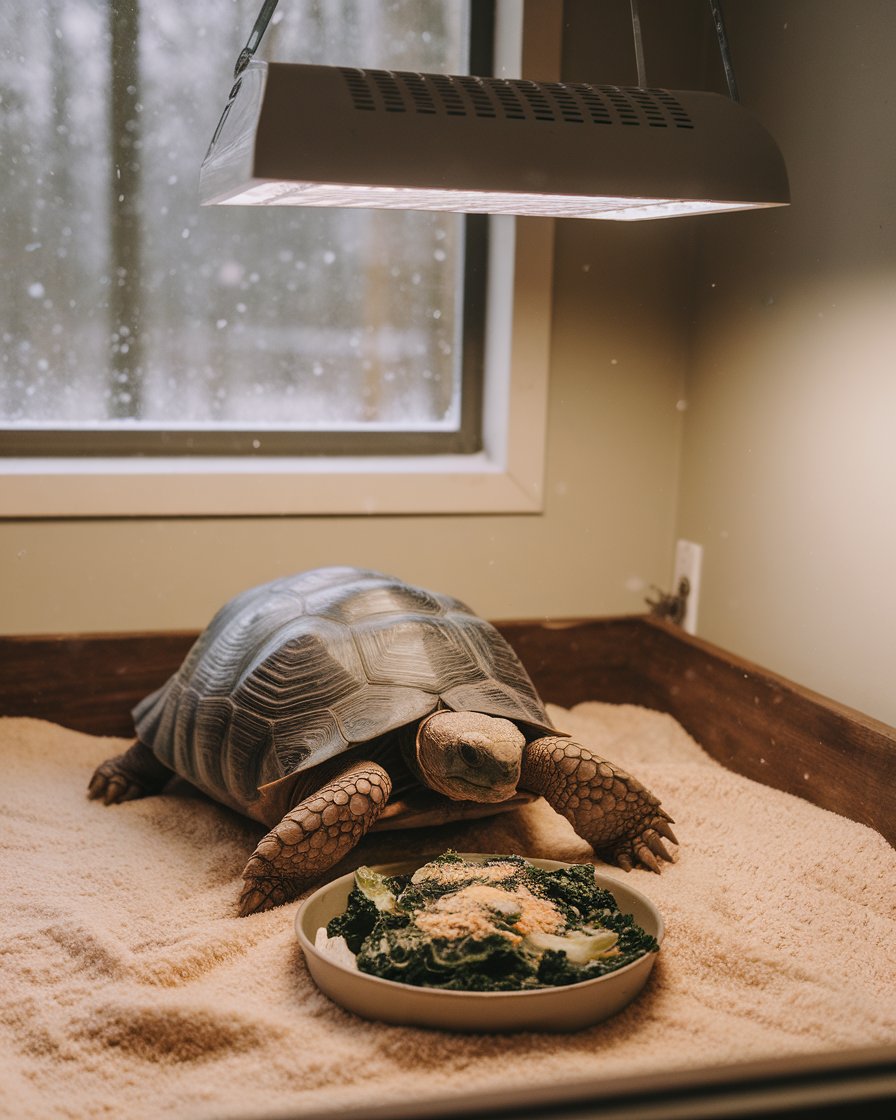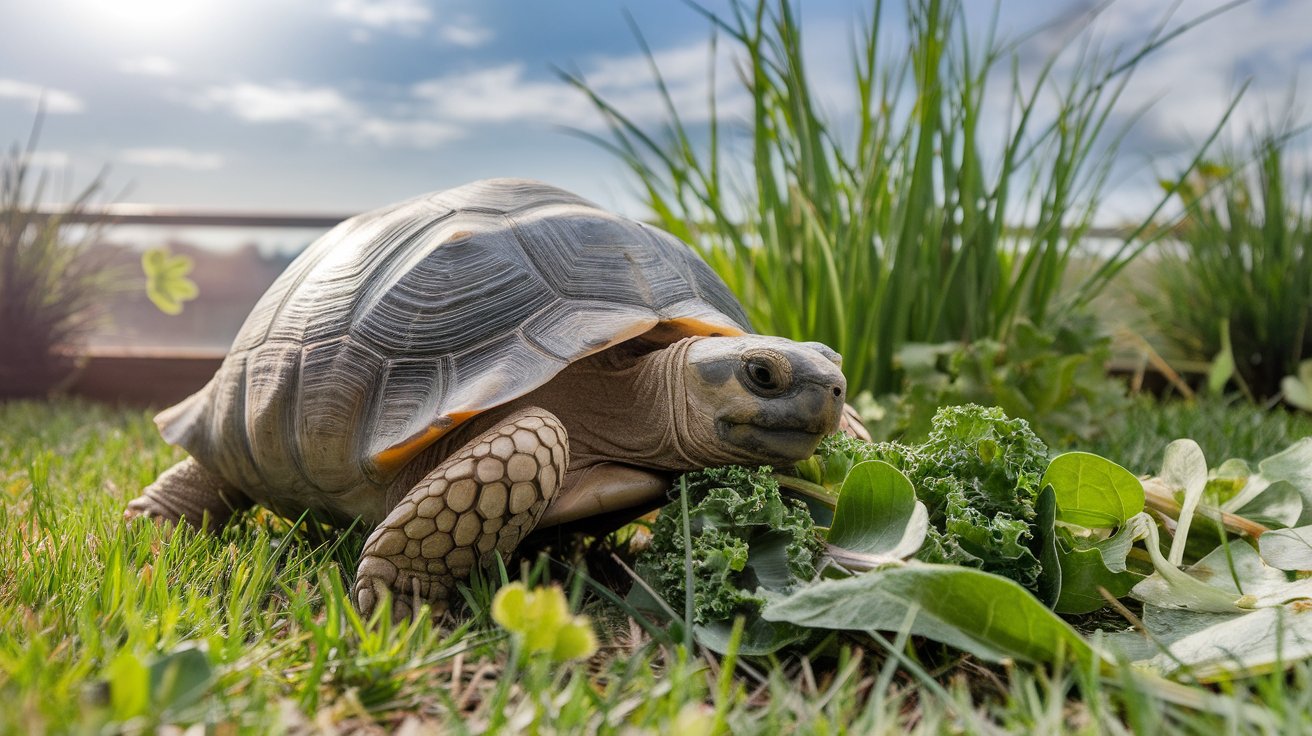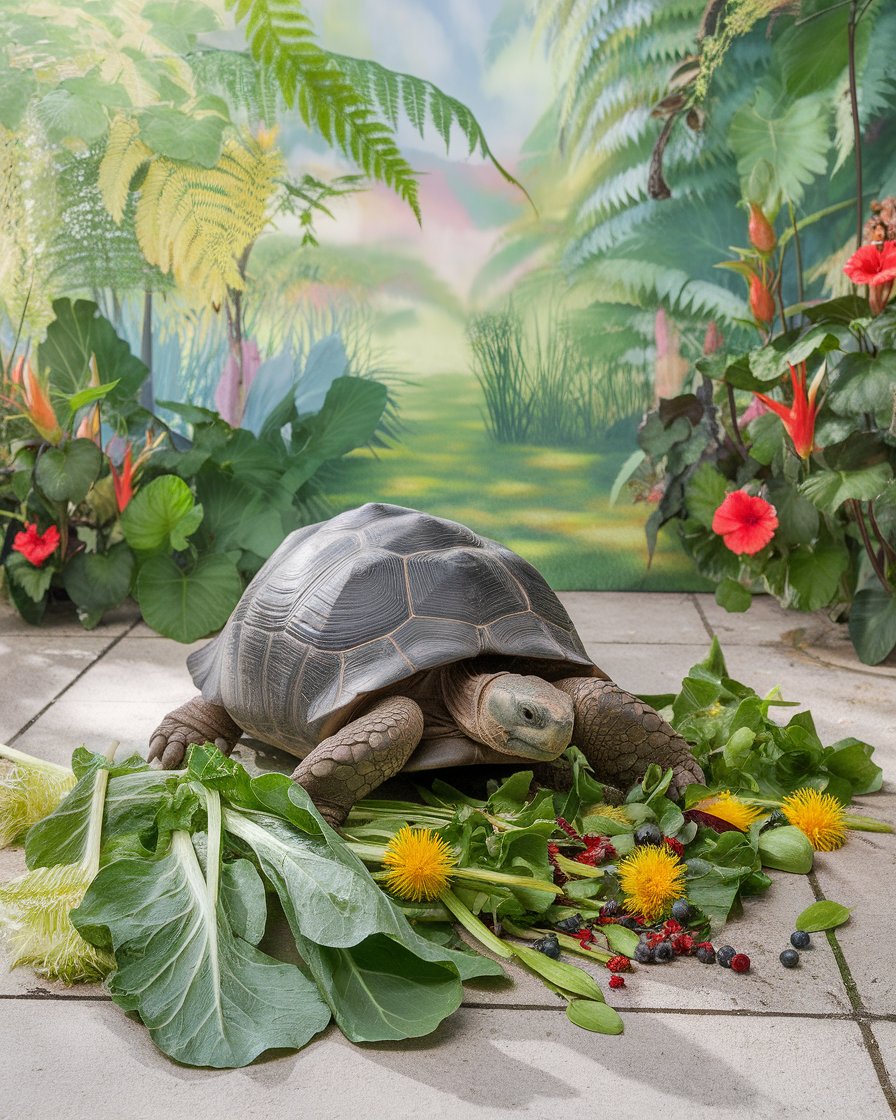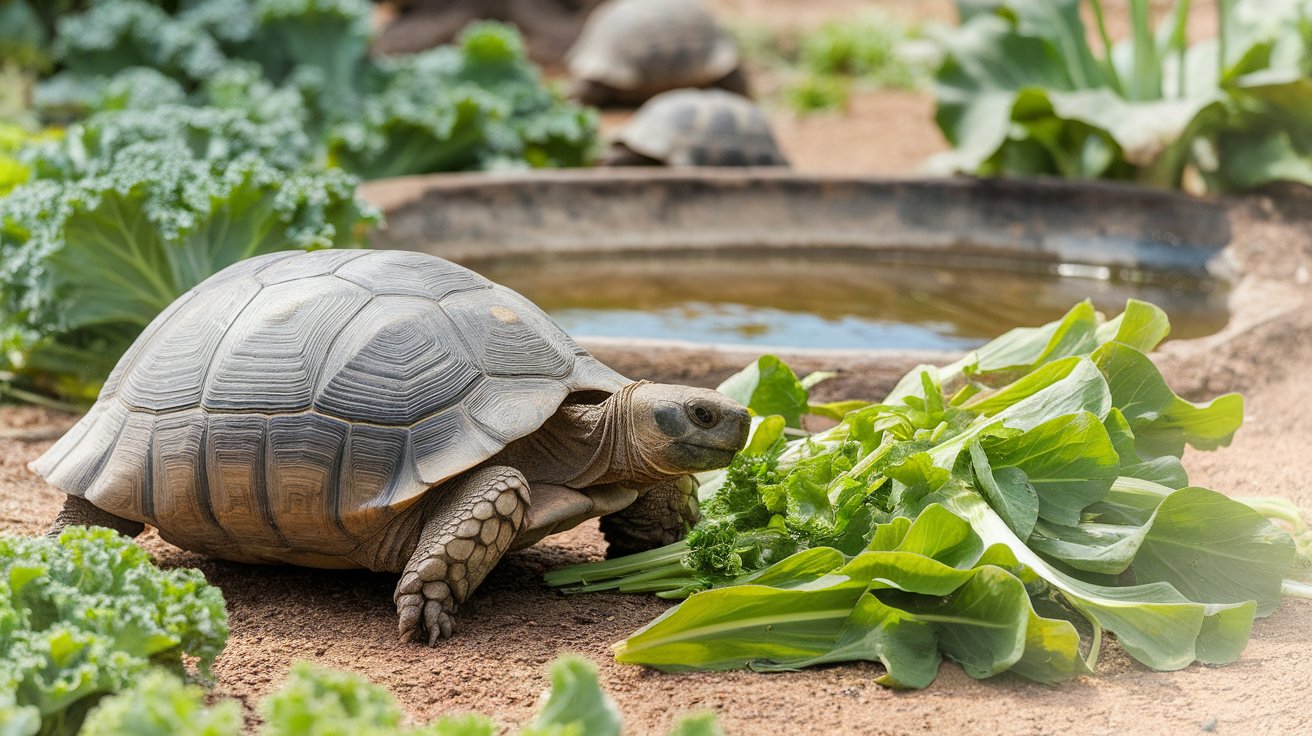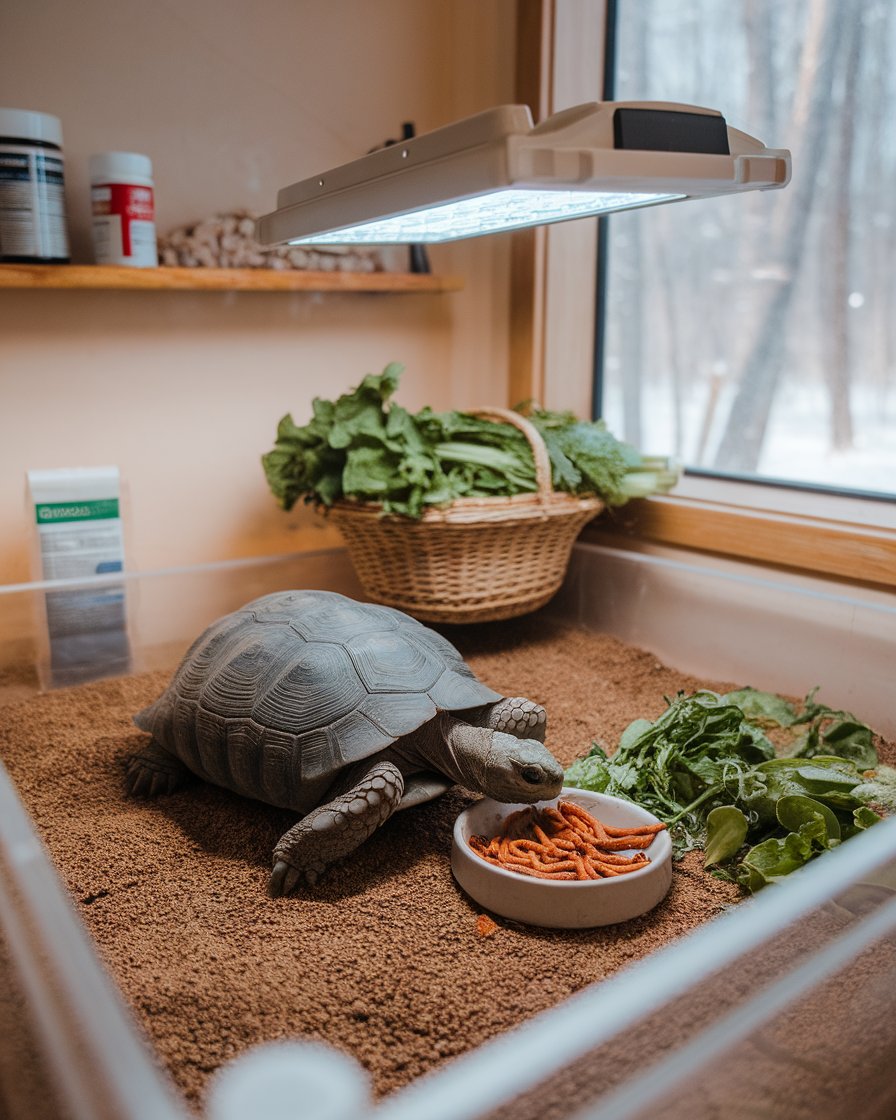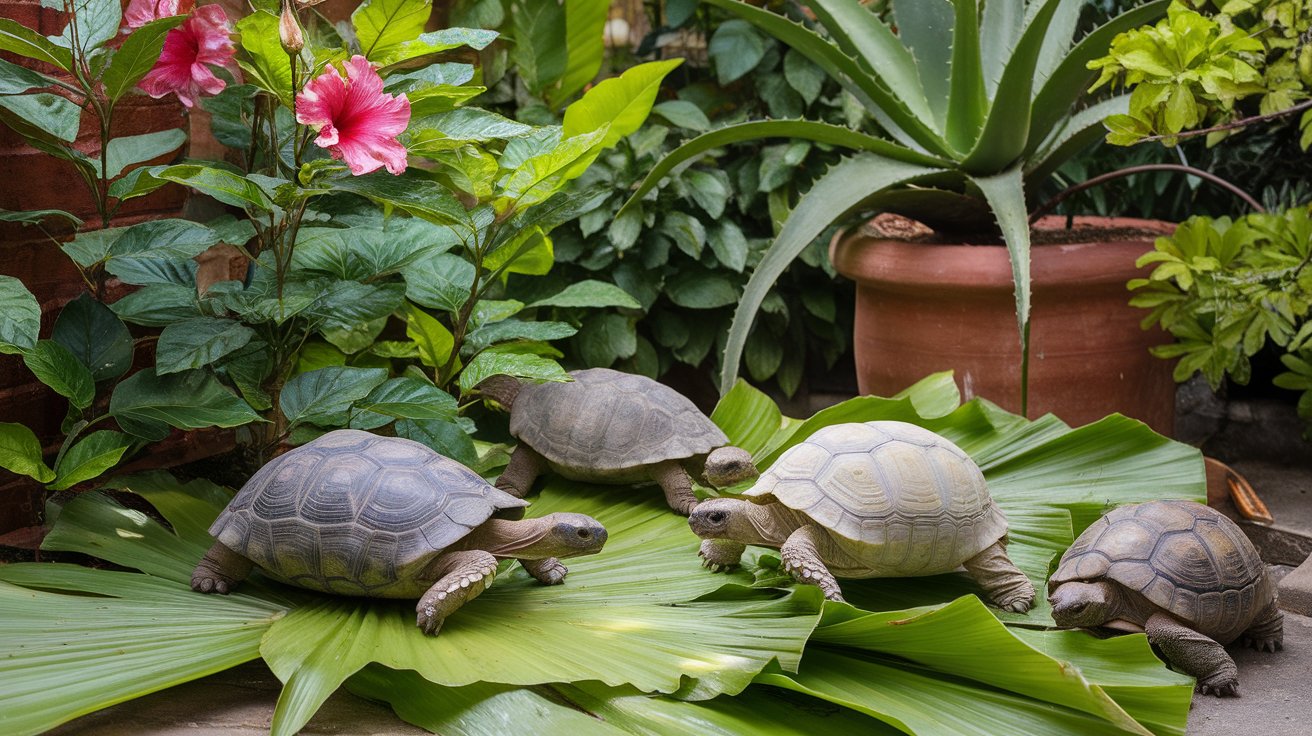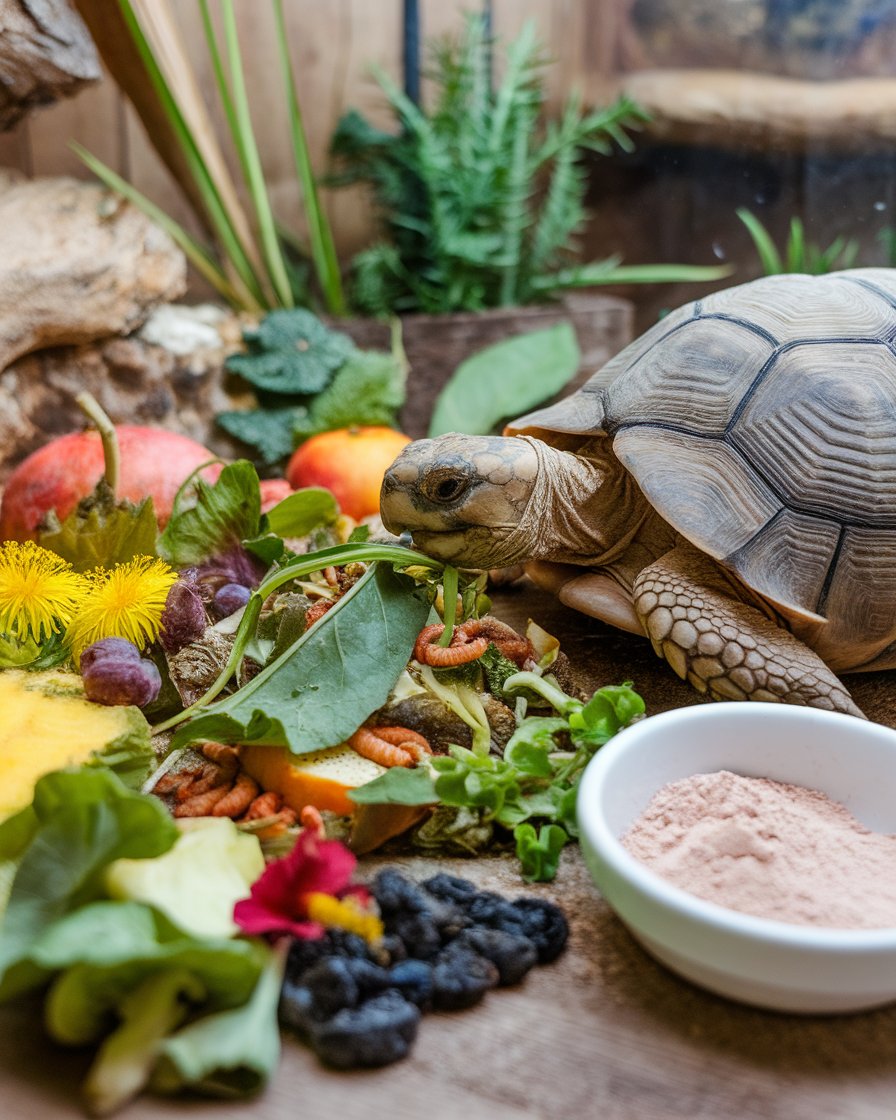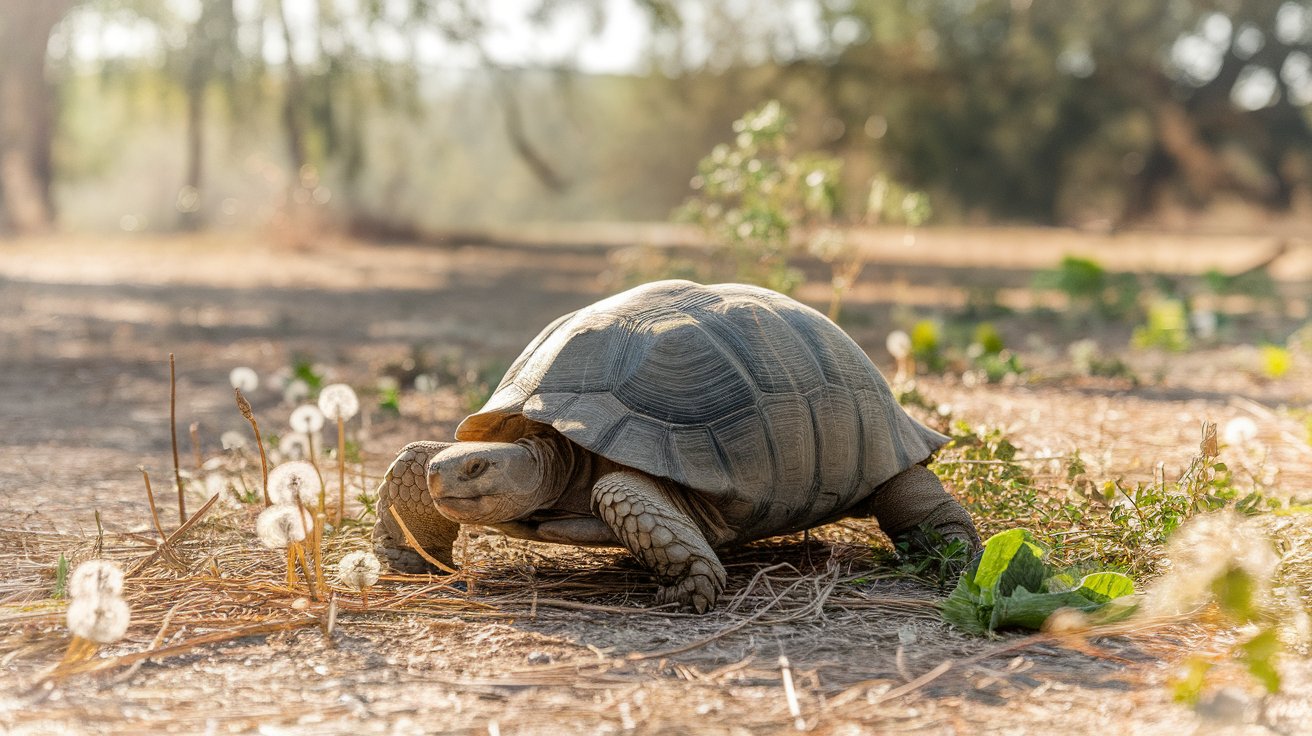Introduction
Winter can be a challenging time for Redfoot tortoise owners, as changes in their habitat and available food options affect the tortoise’s diet. In colder months, outdoor grazing opportunities are limited, requiring keepers to rely on store-bought food items. A diet rich in fruits and vegetables, such as leafy greens, is crucial, but it is equally important to avoid low-nutritional-value foods like iceberg lettuce. A varied approach to feeding not only helps maintain their digestive health but also prevents deficiencies common in a captive diet. For example, a light dusting of calcium on their greens can offset the absence of natural grazing options.
Since tortoises are known to eat a diverse range of foods, mimicking their natural environment in captivity is key. Including pesticide-free greens, such as mustard greens and dandelion leaves, ensures their meals are safe and nutrient-dense. Sprinkling in some pellet food occasionally provides additional nutrients, keeping their diet balanced.
Key Takeaways
-
Winter requires diet adjustments for Redfoot tortoises, focusing on a variety of fresh, nutrient-rich foods.
-
Indoor winter feeding can be challenging, making it crucial to offer organic, pesticide-free greens and supplement with calcium.
-
Supplementing the winter diet with protein sources like butterworms and superworms helps maintain nutritional balance, especially for hatchlings.
-
During summer, Redfoot tortoises thrive on a diet that mimics their natural habitat, including a mix of greens, fruits, and proteins.
-
Providing a variety of greens and occasional fruits during summer prevents dietary deficiencies and supports digestive health.
-
Calcium supplements and UV light exposure are essential year-round to support bone health and prevent metabolic bone disease.
Winter Diet Adjustments
As the cold weather sets in, Redfoot tortoise owners need to make thoughtful adjustments to their pets’ diet. Tortoises may have different nutritional needs during the winter months due to reduced availability of fresh produce and the need for added warmth in their enclosures. It’s vital to maintain a diet rich in variety, ensuring their food items still offer adequate nutrition despite the season. Adding supplementary sources of Vitamin D3, particularly when natural UV light is less accessible, helps maintain their overall health. Paying attention to how diet impacts their digestive system and metabolism is crucial, especially as these reptiles slow down during colder months.
Essential Winter Diet Adjustments for Redfoot Tortoises
1. Adjusting Food Variety in Winter Redfoot tortoises require a diverse diet throughout the year, but during winter, it becomes particularly important to offer a wider range of greens due to the scarcity of outdoor foraging options. Incorporating winter-friendly greens like turnip greens, kale, and endive ensures they still receive the necessary nutrients. These leafy greens are high in fiber and essential vitamins that contribute to their digestive health. Offering them pesticide-free and organic produce also helps prevent harmful chemicals from affecting their delicate systems.
2. Supplementing Vitamin D3 in Reduced UV Conditions During the winter months, UV light exposure is naturally reduced, especially for tortoises kept indoors. This can lead to Vitamin D3 deficiency, which impacts their ability to metabolize calcium. Supplementing their diet with Vitamin D3 powder can make up for the reduced sunlight, ensuring their bones and shells remain strong. Adding a UVB light source in their enclosure can also help mimic natural sunlight and support their overall health.
3. Incorporating Protein-Rich Insects While Redfoot tortoises primarily consume plants, adding insects such as butterworms and superworms to their diet in winter is crucial. These protein-rich foods help balance their nutrition during colder months when insects may not be as easily found in the wild. Butterworms are especially beneficial due to their high calcium content, which promotes bone health. Feeding protein sources in moderation every other week ensures that your tortoise gets a well-rounded diet without overloading on protein, which can cause health issues like pyramiding.
Available Produce in Winter
During the winter months, finding fresh greens for Redfoot tortoises can be a bit challenging. However, grocery stores typically offer a selection of organic and pesticide-free greens that these tortoises enjoy. It’s important to prioritize variety to ensure a balanced diet. Mixing up greens like chicory, turnip greens, and endive regularly prevents dietary monotony, which is crucial for their overall health. Additionally, offering fibrous food items such as grasses or cactus in moderation helps replicate their natural grazing habits. Whether in captivity or for tortoises kept outdoors, the goal is to mimic the diet they would have in the wild as much as possible.
Incorporating Protein in Winter Diet
Given that accessible food sources such as bugs diminish in winter, enhancing their diet with protein sources is critical. Butterworms, known for their high calcium content, are an excellent addition, particularly beneficial for hatchlings. Superworms also provide necessary nutrition, acting as an opportunistic feeder option when insects aren’t readily available. For adult tortoises, it’s important to keep protein sources balanced and offered only occasionally to prevent potential issues like pyramiding. Incorporating these protein sources every other week helps maintain a well-rounded diet for Redfoot tortoises during colder months, contributing to their health and longevity.
Summer Feeding Strategies
During the summer months, Redfoot tortoises experience a peak in available food resources, making it an ideal time to fine-tune their diet. These tortoises thrive when offered a diverse range of food items that closely mimic what they would encounter in their natural rainforest habitats. To maintain the health of your pet tortoise, it’s important to provide a balanced diet rich in fresh greens, fruits, and protein sources. This seasonal variety promotes strong digestion and overall health, while also preventing common issues such as metabolic bone disease. Offering foods like hibiscus, snail, and high-fiber greens is essential to their long-term well-being.
Case Study: Implementing Summer Feeding Strategies for Redfoot Tortoises
In a study conducted by the University of Florida on Redfoot tortoises in captivity, researchers explored how varied diets during the summer months can significantly impact their health and growth. The study focused on tortoises that were provided a diverse diet mimicking their natural habitats, including a mix of greens, fruits, and occasional protein sources. Over a six-month period, the tortoises were fed collard greens, dandelion leaves, hibiscus flowers, and small amounts of mealworms and snails.
The results showed that tortoises with a balanced diet had improved digestive health and fewer signs of metabolic bone disease. Juveniles, in particular, exhibited better growth rates when protein was incorporated into their diet in moderation. The study concluded that maintaining a varied and seasonal diet, rich in high-fiber greens and supplemented with protein, is essential for the long-term well-being of Redfoot tortoises.
Varied Diet in Summer
In summer, Redfoot tortoises benefit greatly from a diet that includes a variety of greens and vegetables. Feeding a mix of collard greens, dandelion leaves, and romaine lettuce, while rotating other seasonal produce, ensures they get essential nutrients and prevent any nutritional deficiency. Fresh fruits such as berries and hibiscus flowers can be added occasionally for a nutrient boost and to mimic their natural feeding habits in the wild. Remember to use pesticide-free produce to maintain the safety of the tortoises’ diet. The key is to ensure a mix of items high in fiber and nutritional value, as these herbivorous tortoises rely on a well-rounded, diverse diet.
Balancing Protein and Greens
Though Redfoot tortoises are primarily herbivorous, their diet can benefit from occasional animal protein during the summer. Juveniles, in particular, require more protein to support growth. By offering mealworms, crickets, or snails alongside fresh greens, you ensure a balanced intake of protein and plant-based nutrition. This approach mimics the opportunistic feeding habits of tortoises in the wild, where they may consume carrion or insects. The protein-to-greens ratio is crucial, especially for young tortoises, but should be used in moderation for adults to prevent issues like pyramiding or bladder stones. Maintaining this balance keeps your Redfoot tortoise active and thriving throughout the summer.
Indoor Winter Feeding Plan
During the winter months, when Redfoot tortoises are kept indoors, their feeding routines need careful adjustment to ensure they receive the nutrients essential for their health. Without the natural outdoor environment, it’s necessary to replicate their typical diet by providing a balanced mix of greens, vegetables, and occasional protein sources. Ensuring they receive enough Vitamin D3, through UV light exposure or dietary supplements, helps compensate for the lack of natural sunlight. Incorporating nutrient-rich food like butterworms and calcium supplements can play a key role in maintaining the tortoise’s overall health during these months, as they become less active and their metabolism slows down.
Supplementing with Butterworms
During the colder months, when outdoor access is limited, it becomes crucial to adjust the diet of indoor Redfoot tortoises. One effective strategy is incorporating butterworms into their meals. These insects are particularly high in calcium and serve as an excellent protein source, especially beneficial for developing hatchlings. Feeding butterworms every other week adds variety and ensures adequate nutritional intake, promoting healthy growth and vitality during winter hibernation. Since many tortoise species naturally experience a slowdown in activity, introducing protein-rich options like butterworms can help balance their diet. It’s important to also monitor their consumption to prevent overfeeding, which may lead to digestive issues.
Importance of Calcium in Winter Diet
Calcium is paramount for maintaining bone health in Redfoot tortoises, especially during winter. When feeding indoors, a light dusting of their greens and other food items with calcium supplements can help offset deficiencies due to a reduced natural diet. This practice is not only crucial for hatchlings but for adult tortoises too, as it prevents metabolic bone disease and other calcium-related health problems. Tortoises in the wild, especially Mediterranean tortoises and others, naturally get calcium from their varied diet of grasses and leaves. Recreating this in captivity with cuttlebone and powdered calcium ensures a healthy balance. Pairing calcium with UV light or dietary supplements is essential to a successful winter feeding plan.
“To keep the body in good health is a duty… otherwise we shall not be able to keep our mind strong and clear.” – Buddha
Redfoot Tortoise Diet Guidelines
Redfoot tortoises have a unique omnivorous diet, requiring a balance of plant and animal-based foods. In captivity, their diet must mimic what they would eat in the wild, including a mix of leafy greens, fruits, and occasional protein sources. Their nutritional needs change slightly with seasons, and it’s important to adjust their diet accordingly. Offering a variety of fresh, organic produce ensures they receive the necessary vitamins and minerals to stay healthy. In addition to greens, they should also be given a calcium supplement, especially when kept indoors where access to natural sunlight is limited. This helps prevent common health issues such as metabolic bone disease.
Omnivorous Nature of Redfoot Tortoises
Redfoot tortoises are omnivorous creatures, thriving on a diverse diet that includes both animal and plant material. This dietary flexibility allows them to receive a wide range of nutrients necessary for their health. Unlike fully herbivorous tortoises like the Sulcata, Redfoot tortoises are also drawn to protein sources such as snails and slugs. Offering them a balanced diet, which mirrors their natural opportunistic feeding habits, is essential. In captivity, this might include mealworms, earthworms, and leafy greens. Sprinkling calcium powder on their food two to three times a week ensures that they maintain strong bones and shell health, promoting longevity.
Optimal Greens Selection
When it comes to greens, tortoise owners should prioritize organic and pesticide-free varieties. Redfoot tortoises enjoy a mix of leafy greens such as mustard greens, collard greens, and dandelion leaves. Even if the ideal food isn’t always accessible, providing a mix of readily available greens remains crucial for a varied diet. In addition to greens, fruits such as berries and hibiscus flowers can be included in moderation. These tortoises also benefit from occasional fiber-rich vegetables like squash or cactus pads. Including calcium-rich foods alongside their greens helps prevent deficiencies and promotes overall wellness, supporting their long-term health in captivity.
Conclusion
Ensuring the health of your Redfoot tortoise year-round requires careful attention to their diet, especially during the colder months. Since tortoises can’t rely on outdoor grazing in winter, offering a variety of nutrient-rich foods is essential. Incorporating pesticide-free greens, fruits, and protein sources like butterworms helps replicate their natural diet and prevents nutritional deficiencies. Additionally, supplementing their food with calcium dust or cuttlebone ensures strong bone development, particularly for tortoises living indoors without regular exposure to UV light.
As a species of tortoise known to thrive on a varied diet, Redfoot tortoises benefit from a mix of leafy greens, commercial diets, and occasional protein sources. Providing fiber and calcium-rich vegetables like squash, while avoiding low-nutritional-value foods like iceberg lettuce, supports their overall health. Regular veterinary care and offering the right balance of food tailored to the changing seasons ensure your tortoise can live for 50 years or more in optimal health.



